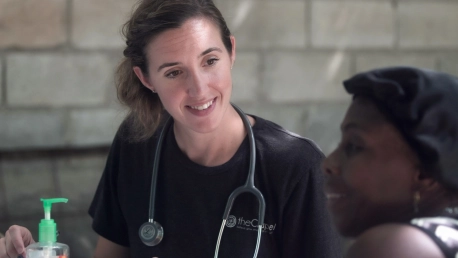In the wake of the pandemic, the landscape of patient safety in healthcare has undergone a significant transformation. The “Safety in Healthcare 2024” report by Press Ganey reveals a complex picture where objective advancements in care safety measures contrast starkly with the subjective experiences of patients. This particularly affects inpatients, who, despite improvements in statistical safety data, do not always feel more secure during their hospital stays. It raises critical questions about the effectiveness of current strategies in not just reducing harm but also in establishing a rapport of trust and assurance with patients. The disconnect between the numbers and patient sentiments suggests that while healthcare is on the right path with safety protocols, there is a deeper layer of patient trust that demands attention if the goal of truly holistic healthcare is to be realized.
The Perception Paradox in Patient Safety
While safety measures are objectively on the rise, a paradox emerges when one considers patients’ subjective perceptions. Outpatients have shown a notable increase in their perception of safety, but inpatients have expressed less confidence. The report indicates that while outpatient safety perceptions increased from 78.8% in 2019 to 81.8% in 2023, inpatient perceptions conversely dipped from 73.5% to 68.2% over the same period. This marks a concerning trend that warrants exploration. The reasons for this discrepancy likely involve multiple factors, including the inherently more stressful environment of inpatient care and the gravity of conditions treated there.The decline in inpatient safety perception could be attributed to the intensity of treatments, the complexity of medical cases, and the 24/7 nature of inpatient care, which might expose patients to more perceived risks and safety threats. Additionally, longer hospital stays mean more interactions with various healthcare professionals and procedures, increasing the opportunity for patients to observe or experience safety inconsistencies.
The Holistic Approach to Patient Safety
Integrating the experiences of patients with that of employees is crucial in establishing a successful safety culture. Dr. Tejal Gandhi of Press Ganey emphasizes the fundamental need for a strategic approach that embodies high reliability and aims for zero harm. The implications here are clear: it’s not enough for hospital staff to follow protocols; they must also convey their actions effectively and empathetically to patients.To truly make patients feel safe, their experiences must be considered in tandem with objective safety data. When patients sense that their well-being is prioritized and see it reflected in the attitudes and behaviors of caregivers, their trust in the system grows. Healthcare workers, therefore, need to be trained not only in best safety practices but also in communication and patient engagement strategies that create a reassuring environment. This integrated approach is essential to bridging the gap between actual safety improvements and patients’ perceptions of care quality.
Addressing the Disconnect Between Safety Advancements and Patient Confidence
Despite the advancements in preventing hospital-acquired infections and falls, patients continue to voice concerns through free-text comments, which provide insights beyond what safety metrics can capture. These comments often highlight forgetfulness, mistakes, and doubts about staff skills—all of which point to the need for more robust safety cultures and training programs that focus not just on compliance, but also on competence and communication as well.To foster a true culture of safety, healthcare organizations must prioritize the patient’s voice, ensuring it guides improvements in care delivery. Only through a transparent and responsive system can patient confidence align with the advancements in safety metrics. This entails creating channels for open dialogue where patient feedback is not only encouraged but also systematically incorporated into service enhancements.
Employee Perspectives on Safety Culture Advancements
Encouragingly, there have been positive shifts in employee perceptions of safety culture within healthcare, specifically regarding Resources & Teamwork and Adequate Unit Staffing. These improvements reflect a growing awareness and commitment towards safer healthcare environments among staff. However, despite these strides, nearly half of healthcare employees still report a low perception of safety culture, primarily regarding mistake prevention and reporting protocols.This insight underscores the necessity of constructive and non-punitive reporting environments. Employees must feel secure in the knowledge that their input about safety concerns will be valued and lead to meaningful changes, rather than retribution. Building a culture where errors are seen as opportunities for learning and where open conversations about safety are the norm is crucial for the continued improvement of both patient care and staff experience.
Ensuring Employee Safety in the Healthcare Workplace
A concerning facet of the patient safety discussion is the 5% year-over-year increase in assaults reported against nursing personnel. This statistic serves as a stark reminder that employee safety is an indispensable element of the overall safety equation. Eighty percent of healthcare providers believe their organizations are concerned about their safety, yet incidents continue to occur, indicating a gap between perception and reality.Protecting healthcare workers from violence and accidents is not just an ethical imperative but a strategic one as well. An environment where staff feel unsafe can easily erode trust, decrease morale, and ultimately impair the quality of patient care. Healthcare institutions must, therefore, enhance their safety protocols, not only to shield their patients but also to ensure that caregivers have the secure and supportive workplace they deserve.
Commitments and Strategies for a Safer Healthcare Future
For healthcare organizations intent on sculpting a safer future, Press Ganey advocates for a steadfast commitment to the core values of safety, complemented by integrated strategies, AI tools, and transparency. Implementing such commitments requires action plans grounded in the beliefs and values of the healthcare providers and patients alike.Embracing innovative technologies can play a pivotal role in advancing safety initiatives. AI tools, for instance, can help predict potential safety issues before they occur, allowing for preemptive measures. However, the foundation of these advancements lies in open communication and the cultivation of trust through transparency. When patients and employees have a clear understanding of the safety strategies employed and are actively involved in their refinement, their confidence in the healthcare system is reinforced, and the perception gap can slowly close.By actively working to reduce the disparity between quantitative safety improvements and the qualitative experiences of patients, healthcare providers will move closer to a model of care that not only showcases excellent safety records but also engenders profound trust among the individuals it serves.









